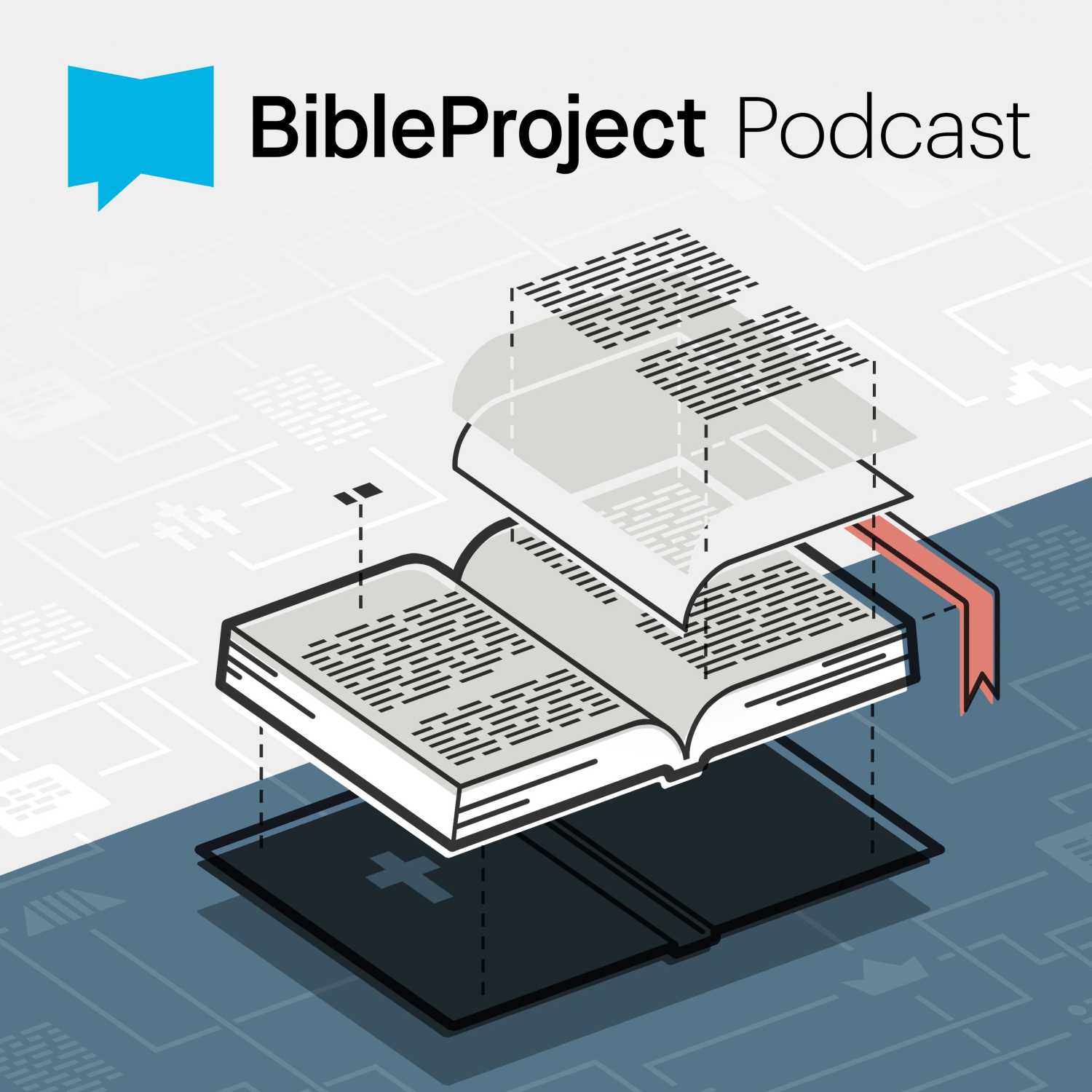.png)
Bible Basics
Welcome! The Bible Basics Podcast is designed to make the Bible approachable and accessible for all, particularly those who are new to the faith or curious about the Bible. Each episode focuses on a specific topic, breaking it down into bite-sized chunks and offering foundational knowledge about the Bible's structure, types, writing, and storyline. The ultimate goal is to increase listeners' comfort level with the Bible and deepen their relationship with God through reading His Word.
Click this link to send us a message:
https://www.buzzsprout.com/twilio/text_messages/2180587/open_sms
Bible Basics
Grasping God's Word: How to Study the Bible
Prepare for a transformative journey with the 'Grasping God's Word' method of Bible Study. . Imagine peeling back layers of ancient history, culture, and language to uncover the core messages of the Bible, ready to be applied to your life today. This week's episode is a treasure trove for anyone seeking to bridge the millennia-old gap between the people of the Bible and contemporary believers. We explore a five-step approach that starts with dissecting the original context and ends with personal application, all under the guidance of the Holy Spirit. Discover what it means to not just read, but truly grasp God's Word, and how it can alter the fabric of your daily walk with Him.
RESOURCES MENTIONED IN THIS EPISODE:
Book: Grasping God's Word by J. Scott Duvall & J. Daniel Hayes
Grasping God's Word = 5 Step Outline
RELATED EPISODES:
Joshua 1:1-9 - How to Study the Bible
We'd love to hear from you - Click Here to Text Us a Message.
Have questions about what it means to follow Jesus?
Whether you’re just starting your faith journey or exploring what the Bible teaches, we’d love to walk with you. God’s invitation is real, personal, and full of grace.
💬 Reach out to Jacqui at info@bible-basics.org
📖 Talk to a trusted Christian in your life
🏠 Or visit a Bible-believing church near you
You are not alone. God’s Word is alive, and He is still drawing people to Himself today. Don’t hesitate to take the next step.
Thank you for tuning in!
Bible Basics is now streaming in video on Youtube. Please subscribe now!
Feel free to contact us at info@bible-basics.org. We would love to hear from you!
Note: All scripture references are from the NIV translation unless otherwise indicated.
Greetings, beloved listeners. Do you know that your feedback is what fuels the very heart of this podcast? There's one topic that's been lighting up our inbox lately, and that topic is Bible Study. After delving deep into the practice of reading God's Word last season, we're thrilled to take the next leap forward with you. Let's get ready to delve into Grasping God's Word through Bible Study. Stay tuned to this episode of the Bible Basics Podcast as we embark on a journey to uncover timeless truths and deepen our understanding together through one of my favorite approaches to Bible Study. Well, welcome everyone.
Jacqui:I'm your host, Jacqui Adewole, and this is the Bible Basics Podcast, where, weekly, we break down the Bible into understandable, bite-sized chunks. Let's get started. The approach that we're going to be looking at is called Grasping God's Word and it comes from an accclaimed book of the same name by J Scott DuVal and J Daniel Hayes. In this episode, we'll offer a bird's eye view of this study approach, but fear not for in the episodes to come we'll spend some time at ground level exploring the intricate details of this approach to study. There's a metaphor for this journey. Picture two distinct towns one belonging to the original audience of God's Word it's aptly named "their town and the other is our town representing us. Between these towns lies a vast river, symbolizing the myriad of differences that separate us from the original texts, such as culture, language, time, situation and even covenant. Before we start, remember to always pray for wisdom and guidance from the Holy Spirit for your study. Now, using this metaphor, I'll give you an overview of the five steps for this approach to Bible study. And, by the way, there's a companion episode that we recorded that provides a brief example of how to apply these five steps.
Jacqui:So, step one grasp the text in their town. What did the text mean to the biblical audience? With the text we've chosen to study, our goal is to grasp the meaning that God intended. We don't want to create meaning out of a text. What we want to do is discover the meaning that's already there. This step may be referred to as observation. We can't just jump into interpretation or application. We do want to get there, but first we have to observe. We need to look and look and look again, observing all we can about the text, scrutinize the grammar and analyze all significant words. Likewise, study the historical and literary context, look for the obvious facts about people, places, events, and these things will be repeated, making them easy to see? And how does the passage relate to those passages that precede it or those that follow it? After completing all these observations, we should summarize in a couple of sentences the meaning of the passage for the original audience, step 2. So now we've grasped the text in their town. We know what the text meant to the original audience.
Jacqui:Now for step 2, we need to measure the width of the river that you have to cross. What are the differences between that original audience and us? We, the contemporary Christian audience, is separated from the ancient audience in at least five ways, such as one culture these are the unique differences between their culture and ours. Two, language any words that are significantly different from our understanding. Three, time Identify the time of the passage. Four, situation Identify significant differences between their situation and our situation today. And five, covenant, if it's an Old Testament passage, identify those significant theological differences that come as a result of the life and work of Jesus Christ. These differences form the river that hinders us from moving text straight from the meaning in their context to meanings in ours.
Jacqui:Step 3. Cross the timeless teaching bridge, that is, the timeless theological teaching in this text. Here we ask what is the central message or the theological point of the text. How does God show up in this text? Here we're looking for the teaching that's reflected in the meaning of the text we identified in step 1. Then we recall and take into account those differences between us and the original audience that we identified in step 2. We also now want to think about similarities between the biblical situation and ours. Holding these differences and similarities in mind, we now want to discover the main theological message or timeless truth of the text. Remember, our task is not to create the meaning, but to discover the meaning intended by the author. That's already there. As God gives specific expressions to specific ancient audiences, he's also given timeless teachings or principles for all His people through the angels, through the same texts. We'll dig into this some more in future episodes, but in general, here are some of the criteria for discovering the theological teaching or the main message. The teaching should be reflected in the text. The teaching should be timeless and not tied to a specific situation. The teaching should not be culturally bound. If we come up with a teaching that only relates to one culture or the other, then we haven't captured a timeless principle. The teaching should be applicable to both the biblical and the contemporary audience. So once we've discovered this, we write out the timeless teaching in one or two sentences using our present or future tense verbs.
Jacqui:Step 4. We've grasped the meaning in the original audience, we've determined the differences between us and that original audience and we formulated our timeless teaching or timeless principle. Now we're at step 4. Consult the biblical map. How does what we've come up with fit with the rest of the Bible? The principle or teaching we've identified should correspond with the teachings of the rest of Scripture. During this step we reflect back and forth between the principle and the teachings of the rest of Scripture, determine if the principle you identified in step 3 is consistent with the rest of Scripture. Do other portions of Scripture add insight to the principle? At the end of this step, sometimes we'll need to reword our theological message slightly to ensure it fits with the rest of Scripture.
Jacqui:Now there's step 5, the final step. Grasp the texts in our town. How should individual Christians today live out the timeless theological teachings you've discovered? Well, we can't leave the meaning of the text stranded in an abstract timeless principle. We must now grapple with how it applies in our real life situations today. Knowing the truth of God is essential, but the blessing comes from applying it, from doing it, and that gets us to application Application of the timeless principle of truth. There are numerous application possibilities. Each of us will grasp and apply the same theological message in a slightly different way, depending on our current life situation and where we are in our relationship with God.
Jacqui:In summary, we've discussed the Bible study approach that is a reliable and trustworthy, through this five-step process one, grasping the text in their town. Two, measuring the width of the river to cross. Three, crossing the timeless teaching bridge. Four, consulting the biblical map. And five, grasping the text in our town. Through this five-step process, you'll embark on a journey of discovery, understanding and application. To further assist you with this lifelong journey, we've released another episode alongside this one, offering a brief demonstration of how to apply these steps. Additionally, we've provided a link to an outline of the grasping God's Word Bible study journey to serve as a handy reference for you.
Jacqui:Whether you're new to the Bible or a seasoned reader, I encourage you to embrace this powerful tool. I believe it'll greatly enrich your spiritual journey and deepen your understanding of God's Word. So seize the opportunity and let's embark together on this transformative exploration of Scripture. If you found this episode helpful, informative or inspirational in any way, would you please share with someone you know who needs to hear it? You can do that by sharing the podcast's website, bible-basicsorg, or you can click on the share button right where you're listening now. For those of you listening on YouTube, go ahead and like, subscribe and leave us a comment. In closing, may the grace and peace of God be with you now and always.
Podcasts we love
Check out these other fine podcasts recommended by us, not an algorithm.

Is Your Way In Your Way?
Cassandra Crawley MayoDisciple Dojo
JM Smith
Everything Everywhere Daily
Gary Arndt
Grammar Girl Quick and Dirty Tips for Better Writing
QuickAndDirtyTips.com